Last Saturday, Monotypebabe also known as Lebogang ‘Mogul’ Mabusela gave a walkabout at Bag Factory Artists’ Studios of her solo exhibition iVum Vum. The exhibition presented Mabusela’s monotype prints and drawings which explore SA’s car culture and Black masculinity. It opened on May 4, 2023, with a monoprint workshop held on May 26 during the Contra Fair. During the walkabout, which was attended by the likes of Dr Rangoato Hlasane, the young artist shared with BubblegumClub how pleased she was with the positive reception.
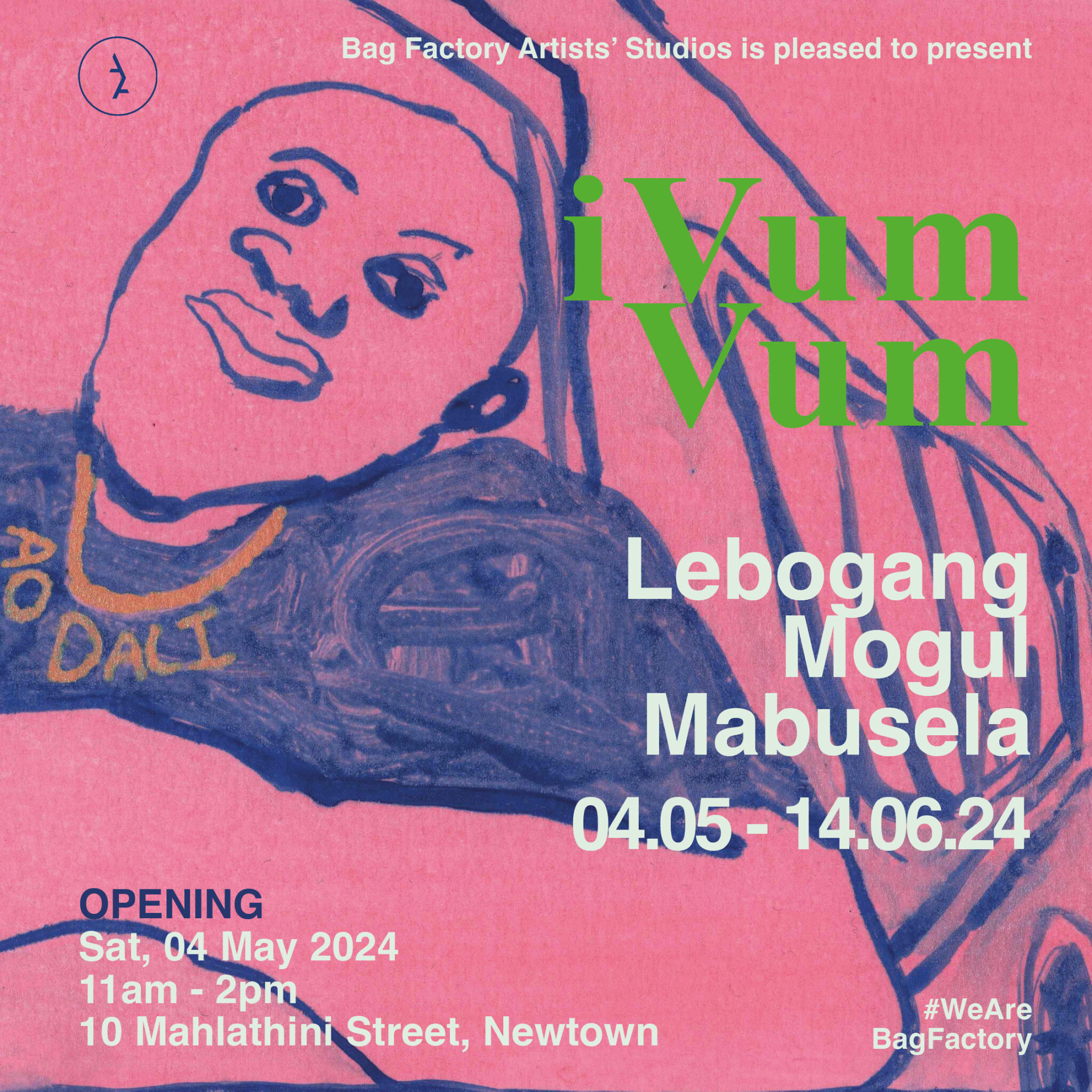

Born in 1996 in the Tshwane residential township of Mabopane, Lebogang Mogul Mabusela has already had a stellar career. She graduated with a BA in Fine Arts from the Wits School of Arts in 2019, receiving the Standard Bank Fine Arts Prize. That same year, she became a Top 50 Design Indaba Emerging Creative. She was recently shortlisted for the Norval Sovereign African Art Prize and showed work at the Norval Foundation in Cape Town. Her very first solo exhibition Ukwatile? (2022) was at the prestigious Stevenson Gallery in Johannesburg.
Mabusela is described as “a self-proclaimed Zinequeen and Monotypebabe” who has participated in numerous group exhibitions and art fairs locally and internationally, including the Cape Town Art Fair, the Latitudes Art Fair, David Krut Projects, and shows in Lagos and London. She has been invited to participate in numerous lucrative residencies including The Young Womxn Studio Bursary in Johannesburg, Blvck Block Online residency, and The Salzburger-Kunstverein in Austria. So this second solo is a big deal.
As you walk in, the first thing you notice is the intimate size of each piece, which fits the artist’s comic sensibility. There were lots of bright colours, a lot of pink, blue and yellow; the images were made on paper with familiar and safe mediums like watercolour and pastel. Featuring works from Mabusela’s Johannesburg Words series, inspired by Robert Hodgins’ Joburg Words (2018), text was a central component, whether in the depiction of dialogue between characters or the ubiquitous clothing and accessories they donned.
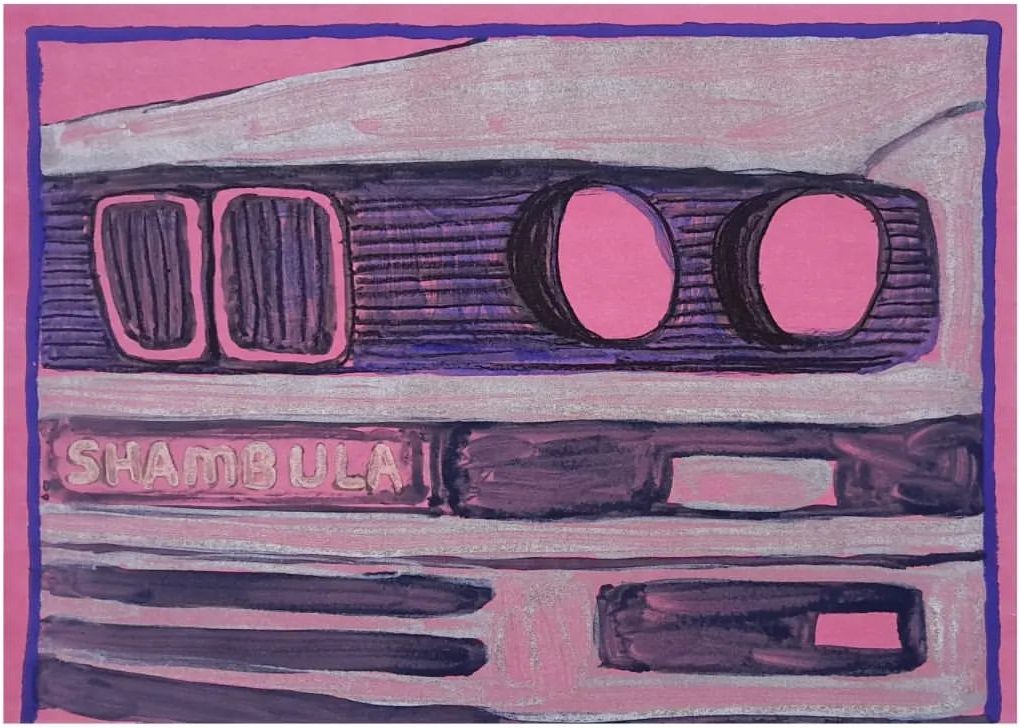
2024
WATERCOLOUR MONOTYPE
21 X 30 cm
Mabusela’s work is said to use humour to highlight Black women’s daily encounters with men, depicting recurring linguistic exchanges you might hear in this environment. She aims to contrast the “sardonic tone” of her art with the harsh reality of sexism and patriarchy. Her work “turns the male gaze on its head and on itself, gesturing towards its persistence and dangerously unassuming nature.” Featuring mainly portraits of men with their cars and clothes, iVum Vum wishes to continue Mabusela’s inquiry into masculinity.
The exhibition title alludes to the Kwaito song Vum Vum by Brown Dash, which narrates a man courting a woman by offering her a ride in his car. When she depicts the peacock green 1992 BMW E30 325is, aka the “Gusheshe,” Mabusela is attempting to show how the personification of cars as women fosters a culture of objectifying women. Illustrating the confrontations Black women face and the tactics men use to disarm them, Mabusela’s little images were displayed on shelves which was said to emphasize their textuality, placing viewers in Mabusela’s perspective and inviting them to interrogate the rift between popular culture and personal agency.
Someone noted how the portraits seemed quite loyal to men’s own depictions of themselves. I agreed. On top of this, the show seemed to amplify the gender binary. Thankfully, the artist was present to address this, saying, “ I like to draw […] Black women. It’s just like, something aesthetically pleasing about us, Black women. We are obviously beautiful. But then men be painting us, and drawing us, and then making money from it. While you look at […] how, it’s like, fewer women who are artists, and they don’t get to make a living from their art.”
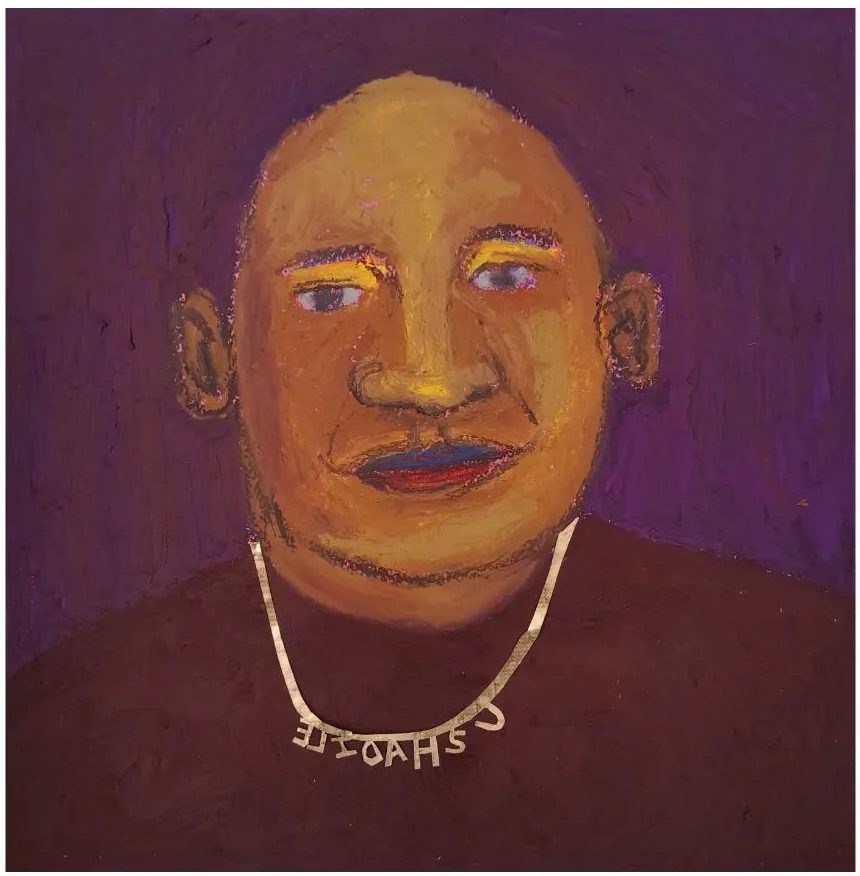
2024
Oil pastel and cigarette foil on paper
30 x 30 cm unframed
44 x 44 cm framed
Because of their cuteness, one may be tempted to view the pieces as solid collector’s items at best, given the artist’s growing popularity. But what’s interesting about Mabusela’s iVum Vum is its attempt to return the gaze. “It’s such a male-dominated space. So […] I’m going to look at them. They’re always looking at me. I’m just going to dissect them. Just look at them, look at them, look at them. And, yeah, like the man just stopping his car to go to like hit on her. It’s just like, it’s scary. And, I started to use pink paper to highlight that it’s from a feminine voice.”
Ushadile is the standout of this exhibit because it is strong regardless of the subtext. As for the rest of the work, the aesthetic choices make the work feel extra light and jovial, which might seem incongruent with addressing issues like misogynoir, but the tactic may pay off eventually. The efficacy of humourous images varies. Humour is subjective. The promising artist has every opportunity to continue sharpening her skill and the potential to contribute crucially to this mammoth and universal topic.
According to Bag Factory, “iVum Vum unravels South Africa’s history with automotive culture. [It] is a critique of gender roles within contemporary South Africa, and beyond, and how its actors attach themselves to hegemonic expressions of masculinity. The exhibition questions who is allowed to pursue pole position and who takes the last spot within the domain of car culture, and culture at large.” That’s a mighty tall order. But what really matters is that the attempt exists in the first place. The more shots we shoot, the sooner we will be in the driver’s seat.
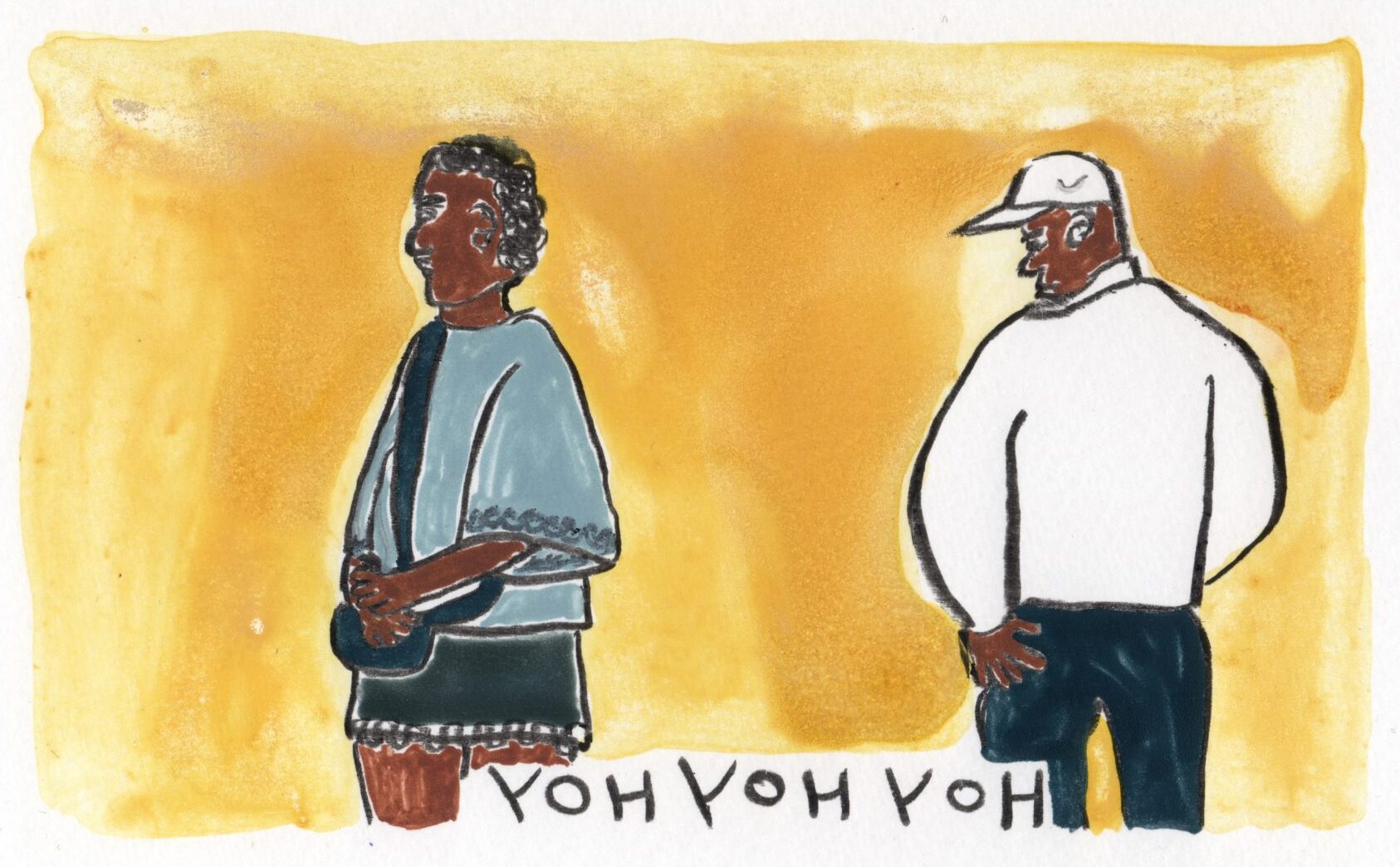
2024
Watercolour monotype
21 x 24 cm
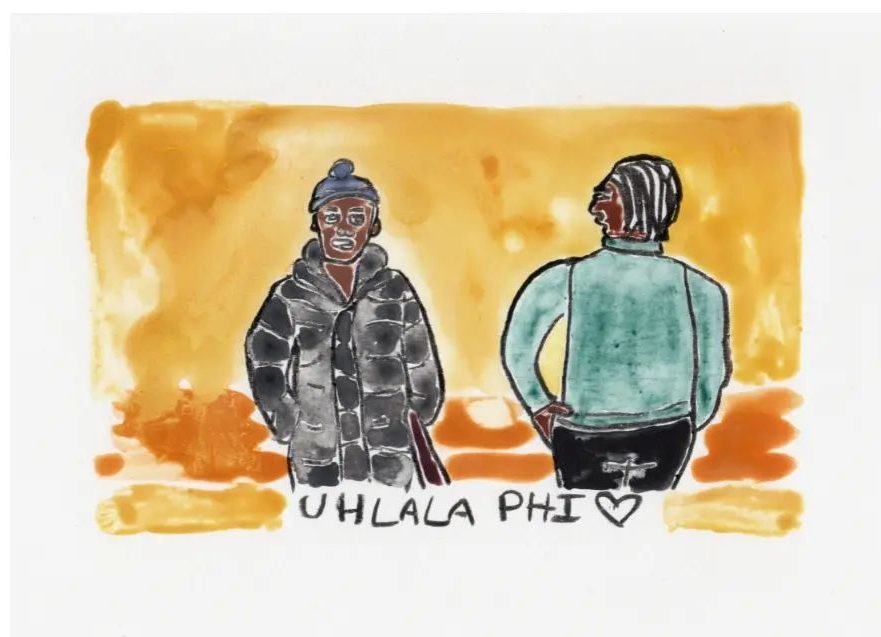
2024
WATERCOLOUR MONOTYPE
17 X 24 CM
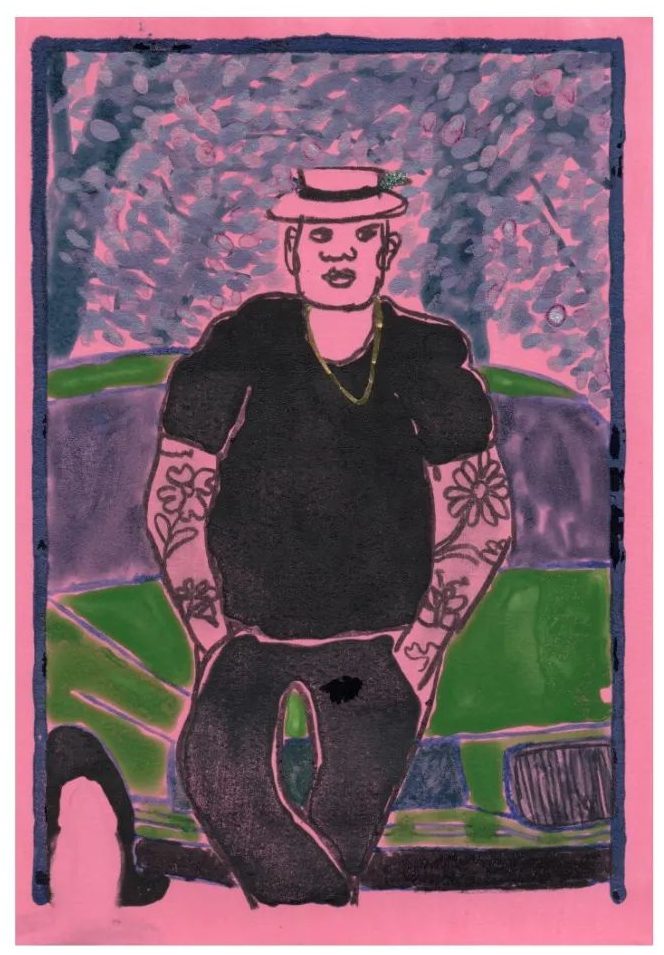
2024
Watercolour monotype with cigarette foil
21 x 14.8 cm
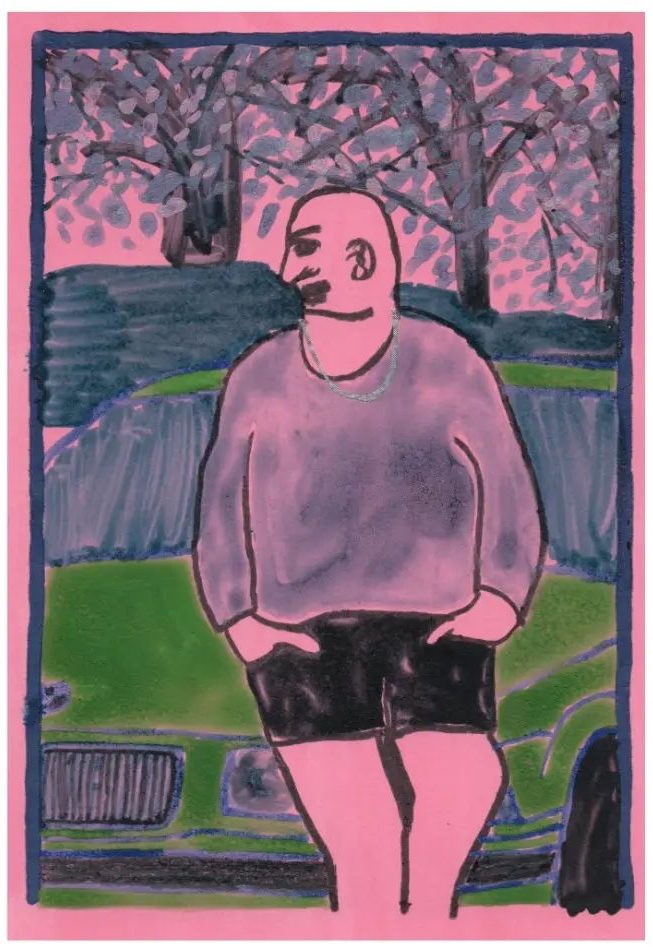
2024
Watercolour monotype with cigarette foil
21 x 14.8 cm
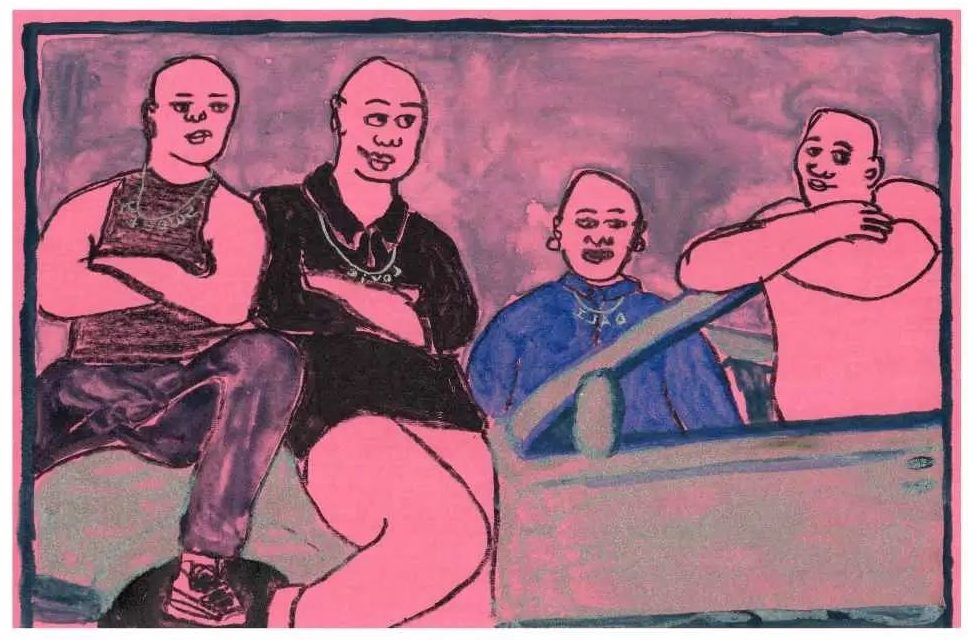
2024
Watercolour monotype
17.5 x 26 cm unframed
31 x 40 cm framed



















































